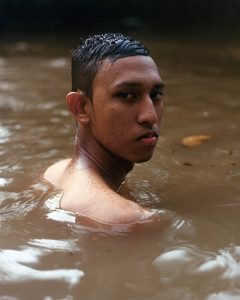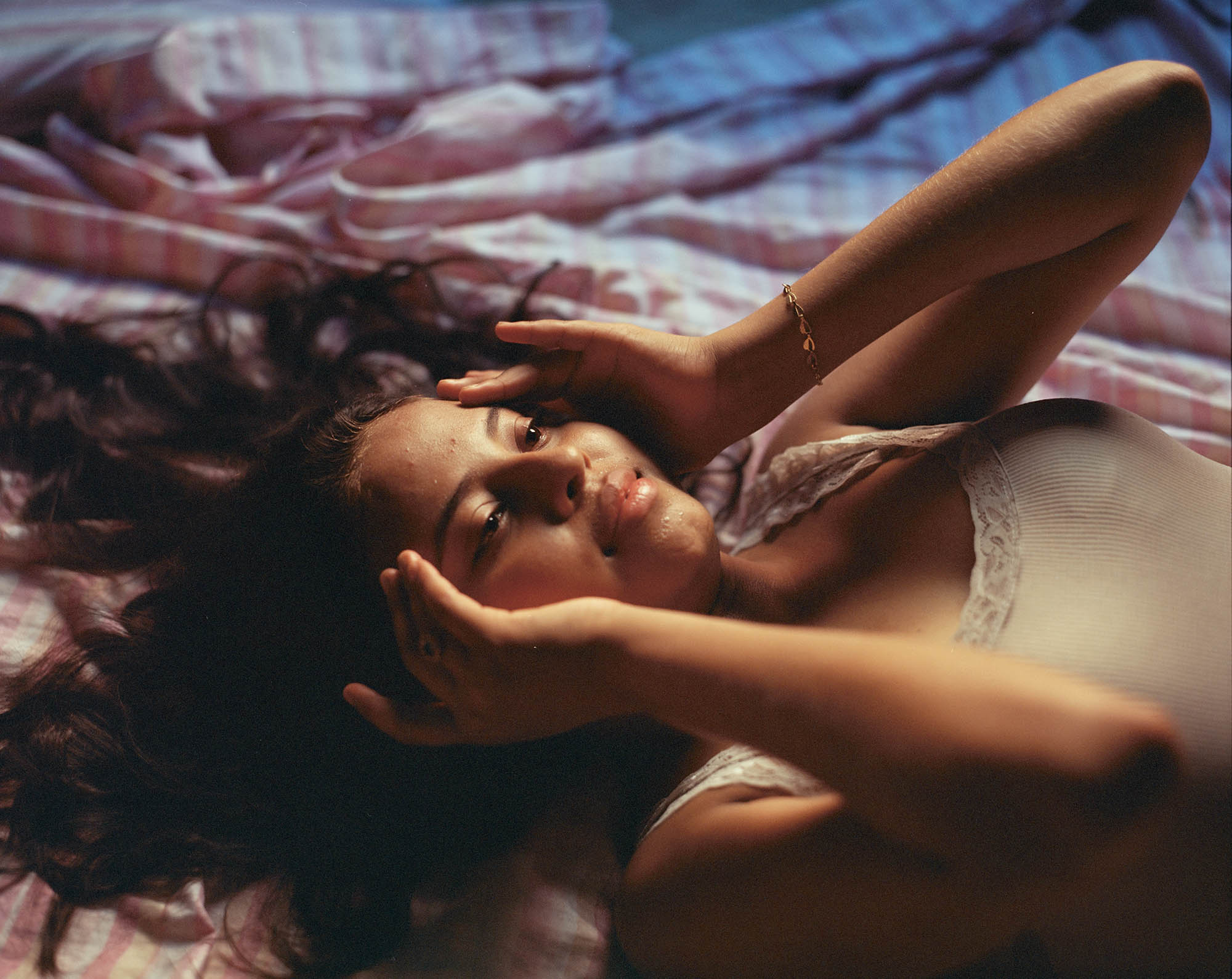What do we as outsiders imagine indigeneity to look like in an ever-growing globalised world? Are we captured, clutched firmly in the grasp of Western traditions and ideals that, for some reason, still attempt to dictate the tone and voice of our own histories and contemporary forms of expression? Furthermore, what does modern indigeneity look like, and what will it look like in the future?
With Daniel Jack Lyons‘ debut monograph, the American photographer so beautifully asks us as the reader, as the outside observer, not to make our own assumptions and assertations about these complex issues but rather to listen and learn from those for whom the conflict and comfort of modern indigeneity is not a matter of theoretical exploration but rather the realities of lived experience.
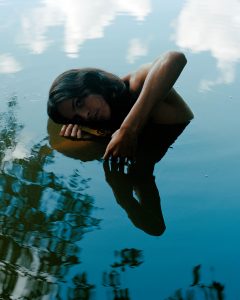
Like A River is so obviously a project that carries with it so much more weight than a book filled with pretty pictures and intricate compositions. However much of a redundant statement this may seem, you would be surprised by how many photography projects fail to convey any emotion or call to action beyond the initial response to the beauty of any single image. There is no doubt that the 70 images spread over 112 pages are breathtakingly brilliant. Soft and sensitive when they need to be, harsh and emotive when tackling some of the issues brought up.
What Lyons has created in this project, which was shot over three years, is something that should be celebrated, a clear and conscious construction of contemporary issues of gender and tradition, of identity and race, of coming of age in a rapidly changing modern landscape that threatens the lives and autonomy of each and every one of the subjects that form part of the project.

Calling the project a careful construction, however, would not only be shortsighted but would diminish something I value most about the manner in which Lyons went about this project. Simply put, Like A River isn’t some construction of modern indigeneity and the complexities thereof by yet another outsider, parachute journalist, poverty-porn-seeking photographer. Lyons isn’t trying to spoon-feed us their own interpretation of a subject they have no lived experience of. Quite the contrary. Through the complex collaborative nature of their practice, the images end up feeling more like an intimate, open invitation from the subjects themselves to be observed in the manner in which they feel they want to present themselves.
They explain this in their interview with Alessia Glaviano for PhotoVogue:
As a rule, I never photograph someone the day I meet them. In fact, this project began with a big meeting where I met with young leaders in the community. I introduced myself and the intentions behind this project showed examples of my work and wrote my name and phone number on a whiteboard. I explained that this must be a collaboration, that I only go where I am invited, and that I ultimately want to hang out before making photos together.
The response was overwhelming: Everyone wanted to participate. In my first meetings with people, I always made it clear that these photos could end up in a book or exhibition, and encouraged people to think about how and where they would like to be photographed—how they want to be seen.
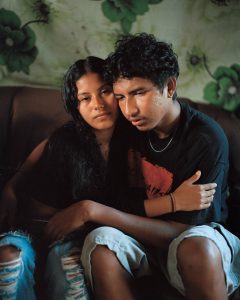
Although this may seem like doing due diligence, photographers seldomly secede that level of creative control over particularly large-scale projects such as this. But in these actions, in this humanistic approach, Lyons can create, in a collaborative sense, images that are weighted in far more than the ink and imprints they are made up of.
In the lush Brazilian Amazonian town of Careiro at the base of the Tupana river, Lyons took his time to engage with not only his environmental surroundings but, more importantly, the people who inhabited this space. Suppose you were to hear, “American photographer visits rainforest to photograph the indigenous people”. In that case, I’d be willing to put money on the image of an old and wise shaman, in some form of facepaint and intricately feathered crown permeating your mind. But this is precisely one of the misconceptions Lyons wanted to tackle.
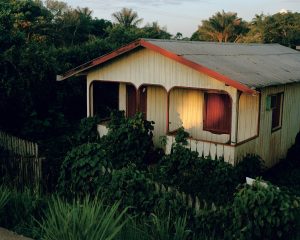
As they explain in that same interview for PhotoVogue:
I think the single biggest stereotype about Indigenous people in the Amazon is that they are all living in tribes, secluded from the rest of the world. That certainly exists… But that’s not all there is, nor is it the majority. My experience of Indigenous communities in the Amazon was meeting people who have very complex and intersectional identities.
While some people come from those secluded communities and are proud of their heritage, they also listen to trap and 90s indie rock music and are skaters, drag queens, musicians, social rights activists, etc. I guess the biggest stereotype that needs to be broken is that there is not one kind of Indigenous identity. More often Indigeneity is one aspect of multiple intersecting identities that work in unison, and are unique to each individual.
And it’s here that Lyons’ work really stands out. It’s not just the fact that they engage and collaborate with a whole host of characters and identities we wouldn’t necessarily place within the communities they occupy, but the manner in which Lyons work doesn’t end up unintentionally othering them from the very communities they are a part of. Empowering and championing the trans and queer folk with whom they collaborated so closely.
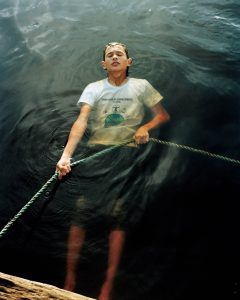
There’s this beautifully poetic intersection between modernity and tradition, between ideas from the past and a group of people coming into adulthood trying to figure out what their futures and the future of the land they call home may look like. I guess as we grow older, we forget that growing up isn’t always the easiest thing. It is rife with doubts and deliberations, crises of self and a level of uncertainty that we don’t often get to experience later on. The world is at our fingertips and yet so inherently out of our control.
What Like A River is, is more than can be explained by just my words and musings. Imagine a profoundly powerful project that not only turns the mirror towards the Global North pushing personal agendas onto people and places they should have no say over. This is illustrated beautifully in one of Lyons’ quotes in their interview with Sarah Moroz, “When the Amazon was on fire, everybody was talking about it as the lungs of the earth—how important it is to preserve the forest because it accounts for a certain percentage of the oxygen that we have access to globally. I didn’t hear about the people [living there]: homes being lost, communities being displaced.” But also shines a light on so many of the intricacies and complexities many indigenous people have to deal with while coming of age in a world that isn’t always all that welcoming in accepting them for who they are.
